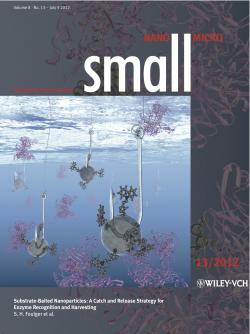Researchers at Clemson University have developed a new model system to gather and harvest enzymes while retaining the biological functioning of the enzymes. Living organisms produce enzymes which are round proteins that act as a catalyst for chemical reactions.
 Baiting and harvesting of enzymes (Credit: Stephen H Foulger)
Baiting and harvesting of enzymes (Credit: Stephen H Foulger)
The research finding has significant impact on cancer research. The model can be applied not just in the extraction of recognized enzyme pairing but can also be employed in identifying unrecognized enzymes. With the method offering promise in biomedical applications, it is an indication of the direction of cancer research where the focus is shifting to the outer portion of nanoparticles in order to isolate proteins that guide the growth of cancer cells.
In order to find out the structure, function and interaction of a protein occurring in a complex mixture, it is essential to sequester the protein from the mixture. This is a difficult task. The researchers achieved this by employing a nanoparticle with the enzyme’s target attached to its outer surface. The enzyme in question was a protein produced in the soil. The enzyme was frozen in place while it took the target bait on the nanoparticle. On removing the nanoparticle, the team found that the enzyme still remained functional.
The ultimate aim of the researchers is to modify the proteins’ cellular concentration in cancer to prevent the cell from spreading and subsequently controlling the growth of cancerous cells in the body.
Source: http://www.clemson.edu/